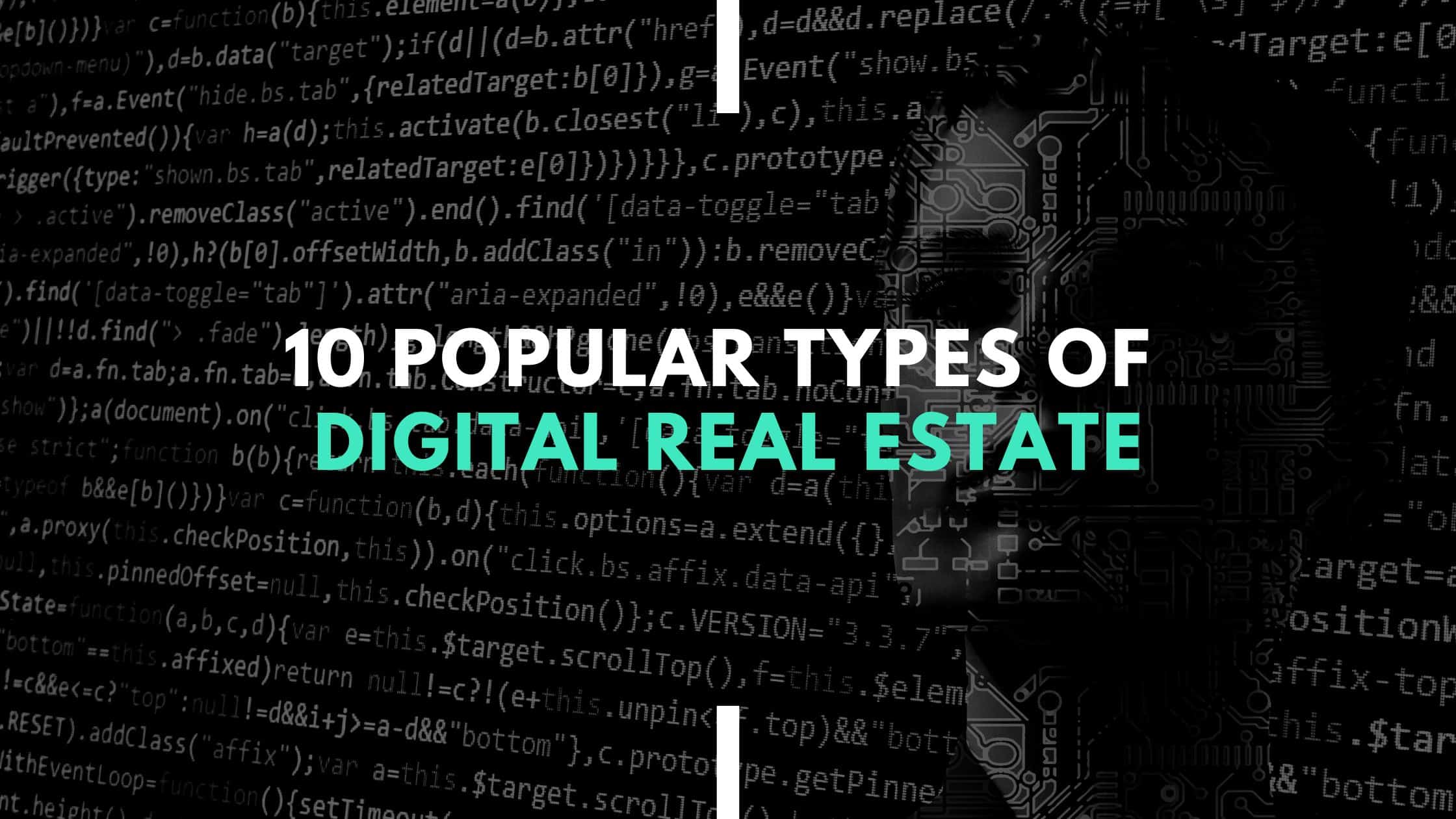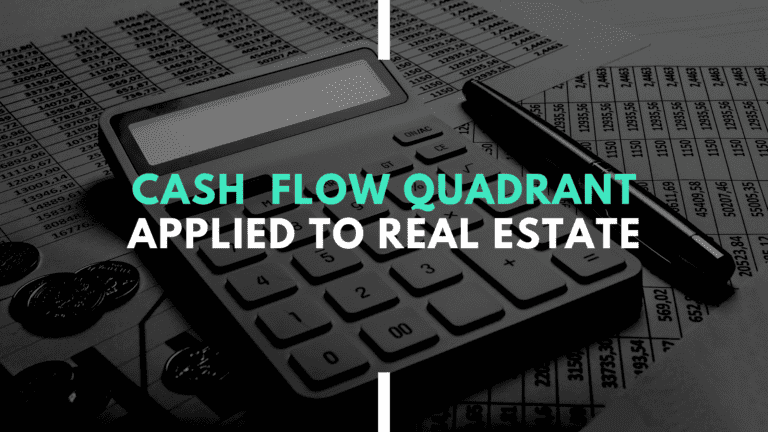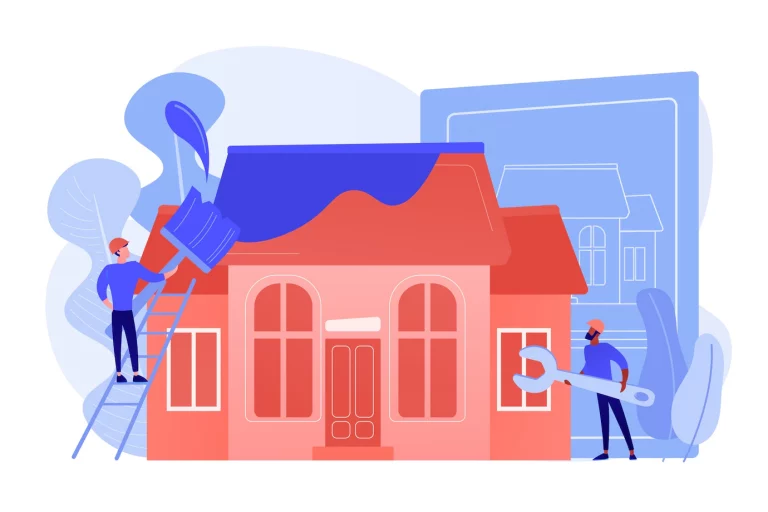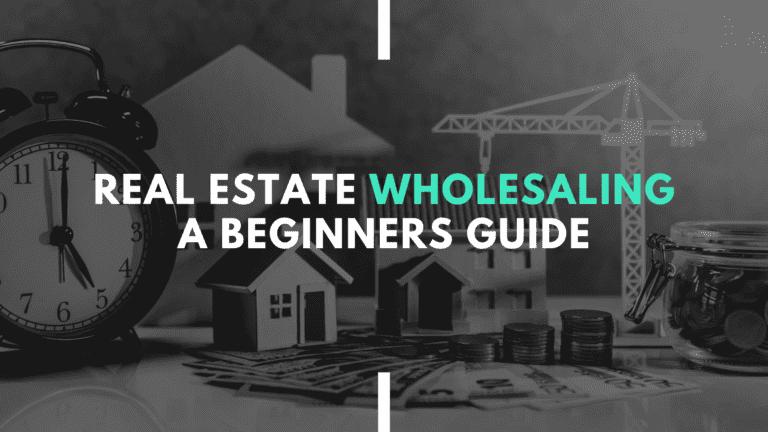Unlocking the Future: Exploring 10 Types of Digital Real Estate Investments
The new world of digital real estate investing has become a hot topic for investors everywhere. However, many people are unfamiliar with the term and are unsure where to begin. In this post, I will discuss ten types of digital real estate investing and provide a brief guide on how to quickly get started with any of them, usually with minimal upfront investment.
1. Website Flipping
Website flipping remains a highly profitable avenue for the savvy investor. The premise? Simple. Buy, improve, sell. Of all the different types of digital real estate investing, this may be the path of least resistance if you have the right skillset.
Step 1: Purchase with Potential
First, You need to acquire a website with solid growth potential. Don’t be deterred by sites that appear lackluster at a glance. Remember, you intend to renovate and sell at a profit. It’s more important that it has a great idea behind it, with the potential to improve and be profitable.
Websites to Consider | Potential Indicators |
|---|---|
Content-driven sites | High-quality articles but poor SEO |
E-commerce platforms | Good products but weak website design |
Service websites | Great service offerings but lack of online visibility |
Step 2: Spruce it Up
Your newly-acquired digital property might be rough around the edges, but with some spit and polish, it could transform into a cash-generating machine.
Here’s how:
- SEO Optimization: Utilize keywords and meta descriptions, optimize page load times, and ensure mobile compatibility. An improved search engine ranking equals increased traffic and revenue.
- Content Enhancement: Update outdated content, create engaging new material, and remember: quality over quantity.
- Design Makeover: An attractive, user-friendly design can go a long way in improving the website’s value. Don’t underestimate the power of first impressions!
Step 3: Sell for a Profit
After revamping your site, it’s time to return it to the market. An upgraded website with increased traffic and revenue is an appealing prospect for potential buyers, setting the stage for a profitable sale.
👉Pro Tip: Use platforms like Flippa or Empire Flippers to list your site for sale. They provide an existing audience of interested buyers, ensuring your hard work doesn’t go unnoticed.
Remember, as an experienced digital real estate investor; there’s nothing quite as satisfying as turning a lackluster website into a lucrative investment through digital elbow grease. Happy flipping!
2. Domain Name Investing
With the ever-growing digital world, domain name investing has emerged as an intriguing and potentially lucrative form of digital real estate investing. So, what’s the game plan? You purchase domain names you believe will increase in value over time, then sit back, relax, and watch as their value soars.
Step 1: Spot the Right Domain
The trick to winning at domain name investing is identifying domains with substantial growth potential. You can also use tools like the free Godaddy name value generator, which will estimate the domain’s current value based on their algorithm (it isn’t perfect, but it’s a good start).
Domain Types to Consider | Potential Indicators |
|---|---|
Descriptive Domains | Specific to an industry or product |
Business Names | Potential future business names |
Short Domains | Domains with two or three letters |
Step 2: Secure Your Investment
Once you’ve spotted a domain with potential, the next step is to secure it. Remember, domain names are unique, so if you’ve found a good one, don’t hesitate to snatch it up! My favorite domain registrar is Namecheap, not just because of the value proposition behind the name. It’s also an easy-to-use platform.
Step 3: Hold or Sell
Here’s where your keen sense of market trends comes into play. Should you hold onto your domain, expecting its value to increase further, or should you sell it now to a willing buyer for a tidy profit?
👉Pro Tip: You can sell your domains on Godaddy Auctions, Dan.com, Sedo or Afternic platforms. These types platforms cater to an extensive network of potential buyers, making it easier to get a good price for your domains.
Remember, domain name investing involves a certain degree of risk, like all investments. However, research, experience, and a little luck can pay off significantly. I’ve personally grown a domain portfolio worth well into the six figures with a very low initial investment. Several domains I have spent less than $10 on have sold for over $1000.
3. Virtual Real Estate

As the digital landscape continues evolving, we are stepping into new possibilities. One such exciting development is the advent of virtual real estate. Many people have heard of and perhaps participated in the Metaverse. Although that hasn’t gone in the direction, some thought it might at this point, in platforms like Decentraland, Somnium Space, or Cryptovoxels, investors can buy, develop, rent, or sell properties in these virtual worlds.
Step 1: Explore the Virtual Landscape
Before you jump into this digital property market, it’s crucial to understand the lay of the land.
Virtual Platforms to Explore | Unique Aspects |
|---|---|
Decentraland | User-owned virtual city |
Somnium Space | Integrated VR headset functionality |
Cryptovoxels | Ethereum-based virtual world |
Step 2: Secure Your Plot
Once you’ve identified a platform and a location, the next step is to purchase your plot of virtual land. Like in the physical world, location also matters in the virtual one. Choose wisely!
Step 3: Develop and Monetize
With your virtual plot in hand, it’s time to develop it. You can build structures, create experiences, or rent or sell the land to other users. The possibilities are only limited by your imagination!
Remember, as with all investments, virtual real estate investing requires careful consideration and strategic planning. But with the right approach, it can be an exciting and profitable venture.
4. E-Commerce Stores
E-commerce has been on a meteoric rise in the past decade, and the trend isn’t slowing down. For digital real estate investors, buying and selling e-commerce stores presents a unique and profitable opportunity, especially on popular platforms like Shopify and WooCommerce.
Step 1: Spot the Potential Store or Product
The first step towards successful e-commerce store investing is identifying existing stores or products with potential. Look for stores with quality products or services, a good brand, but perhaps need a little more push on the operational or marketing side.
E-Commerce Platforms to Consider | Potential Indicators |
|---|---|
Shopify | High-quality products but weak SEO |
WooCommerce | Good branding but poor website design |
Step 2: Optimize and Improve
Once you’ve purchased an e-commerce store, it’s time to improve. This could involve everything from refining the store’s SEO, improving the website design, and streamlining operations, to optimizing the marketing strategy.
Step 3: Sell or Scale
After you’ve optimized your store and started to see growth, you can choose to sell it off for a profit or scale it further. The right path depends on your personal investment strategy and the market conditions.
👉Pro Tip: Use platforms like Exchange Marketplace (by Shopify) or Flippa to buy or sell e-commerce stores. They offer a streamlined process and a large pool of potential buyers and sellers.
Remember, as with all digital real estate investing forms, buying and selling e-commerce stores requires research, strategic planning, and due diligence. But the right approach can be a rewarding and profitable venture. Happy investing!
5. Mobile Apps
In the era of smartphones, mobile apps have become an integral part of our lives. Mobile applications with a significant user base and revenue can be an excellent investment opportunity for digital real estate investors. It may be easier for most people to start by flipping already-developed applications. Here is a quick guide on how to get started:
Step 1: Identify the Right App
The first step in mobile app investing is finding an app with potential. Look for apps with a solid user base and decent revenue but possibly need improvements in design or functionality.
App Categories to Consider | Potential Indicators |
|---|---|
Games | High downloads but average user ratings |
Utilities | Regular usage but outdated design |
Health & Fitness | Good user base but weak monetization strategy |
Step 2: Enhance and Optimize
Once you’ve purchased a mobile app, it’s time to improve and optimize. This could involve updating the app’s design, improving functionality, or implementing a more effective monetization strategy.
Step 3: Monetize or Sell
After improving the app, you can monetize it further by increasing your user base and revenue or sell it off to another buyer for a profit. The right choice would depend on your personal investment strategy and market conditions.
Remember, investing in mobile apps is like investing in digital real estate. It requires careful research, strategic planning, and continuous monitoring.
6. Social Media Accounts

In today’s hyper-connected world, building a strong social media presence can offer incredible opportunities. Whether your aim is personal branding, promoting a cause, or creating a profitable digital asset, here’s a guide to start your journey.
Step 1: Choose Your Platform
The first step is choosing the right social media platform that aligns with your interests, skills, and the type of content you want to create. You can look into platforms like Youtube or Tiktok if you excel at video. However, if you are better at photography or fitness types of information, you may want to consider Instagram.
Step 2: Create Engaging Content
Content is king in the world of social media. Identify your unique angle, stay consistent with your posting schedule, and always aim to provide value to your audience. High-quality, engaging content is the cornerstone of a successful social media account.
Step 3: Grow Your Audience
With great content at your disposal, your next focus should be growing your audience. This could involve strategically using hashtags, collaborating with other creators, and engaging with your audience through comments and direct messages.
👉Pro Tip: Use social media management tools like Hootsuite or Buffer to schedule your posts in advance and maintain a consistent posting schedule.
Starting a social media account from scratch requires patience and consistency. But, with a well-planned strategy and persistent effort, it can become a rewarding and profitable digital asset. So, roll up your sleeves and prepare to make your mark in the social media world!
7. Email Newsletter
establishing a direct line of communication with your audience can set you apart. Building an online newsletter can be a fantastic way to share your insights, build a community, and even monetize your knowledge. Here’s your guide to get started.
Step 1: Find Your Unique Voice
The first step in creating an online newsletter is finding your unique voice and deciding what you want to share. This could be anything from industry insights, thought leadership, personal stories, to curated content.
Newsletter Theme Ideas | Example Focus |
|---|---|
Business Insights | Entrepreneurship, Startups |
Personal Development | Productivity, Mindfulness |
Curated Content | Top Tech News, Weekly Book Recommendations |
Health & Wellness | Nutrition Tips, Workout Routines |
Art & Design | Design Trends, Artistic Inspiration |
Technology | Emerging Tech, Product Reviews |
Travel | Travel Guides, Cultural Insights |
Food & Recipes | Cooking Tips, Recipe of the Week |
Education | Learning Resources, Educational Trends |
Sustainability | Eco-friendly Practices, Sustainability News |
Step 2: Choose Your Platform
Once you’ve identified your theme, the next step is to choose the right platform to host your newsletter. Many platforms are available, like Mailchimp, Substack, or ConvertKit, each with its own features and benefits.
Step 3: Grow and Engage Your Subscriber Base
With your newsletter set up, your next focus should be growing and engaging your subscriber base. This could involve creating engaging content, implementing effective email marketing strategies, or offering exclusive benefits to subscribers.
👉Pro Tip: Offer an incentive for signing up for your newsletter, like a free e-book or an exclusive article. This can be a powerful way to attract new subscribers.
Building an online newsletter requires consistent content creation and audience engagement. But with persistence and passion, it can become a potent tool for personal branding, community building, and even a source of income.
8. Blogs
As an experienced digital real estate investor, I can tell you: the blogosphere is ripe with opportunities. Starting a blog from scratch can be a rewarding personal and financial venture. Here’s your roadmap to start your blogging journey.
Step 1: Discover Your Niche
The first step to creating a blog is identifying your niche. This should be a topic you’re passionate about and feel confident writing on. Plus, there should be an audience eager to consume this content.
Potential Blog Niches | Why They’re Interesting |
|---|---|
Food & Recipes | Share your culinary adventures or recipes |
Travel | Document your travels or give travel advice |
DIY Crafts | Showcase your creative projects and how-tos |
Step 2: Build Your Blog
With your niche identified, it’s time actually to create your blog. Choose a blogging platform that suits your needs, pick a domain name, and design your blog to reflect your style and theme.
Step 3: Create Engaging Content
The success of your blog hinges on your content. Develop a content strategy that provides value to your readers, keeps them engaged, and makes them want to return for more.
👉Pro Tip: Consider integrating email marketing by building a subscriber list. As discussed above, adding a newsletter can easily create another income stream from your blog. This offers another channel to connect with your audience, share content, and promote products or services.
9. YouTube/tik Tok Channels
As someone who has navigated the intriguing world of digital real estate investment, I can tell you that YouTube is a platform you can’t ignore. With billions of active users, it’s a powerful medium to reach a global audience, generate income, and grow a brand. Here’s a quick guide on why YouTube is worth your time and how to kickstart your YouTube journey.
Step 1: Why YouTube?
YouTube is more than just a video-sharing platform; it’s a vibrant community, an entertainment hub, and a learning resource. By investing time and effort into creating a YouTube channel, you’re building a valuable digital asset that can generate ad revenue, attract sponsorship deals, and even sell products or services.
Step 2: Choose Your Niche
The first step in creating a YouTube channel is identifying your niche. The best part? You can make videos about virtually anything.
Potential YouTube Niches | Why They’re Interesting |
|---|---|
Gaming | Share your gameplay, reviews, or eSports commentary |
Travel Vlogs | Showcase your travel experiences and tips |
Tutorials | Teach something you’re skilled at, like painting or coding |
Step 3: Start Creating
Once you’ve chosen your niche, it’s time to start creating content. Equip yourself with the right tools, create a content strategy, and remember: consistency is key.
Step 4: Grow and Monetize
Growing your subscriber base and views will take time, but strategic use of keywords, engaging thumbnails, and cross-promotion on other social media platforms can speed up the process. Once you hit YouTube’s monetization criteria, you can earn from ads, memberships, and super chat features.
Investing in a YouTube channel takes creativity, patience, and a deep understanding of your audience. But with these elements in place, you can turn your channel into a profitable piece of digital real estate. So, ready to step into the YouTube spotlight? Your journey starts now
10. Crypto Currency
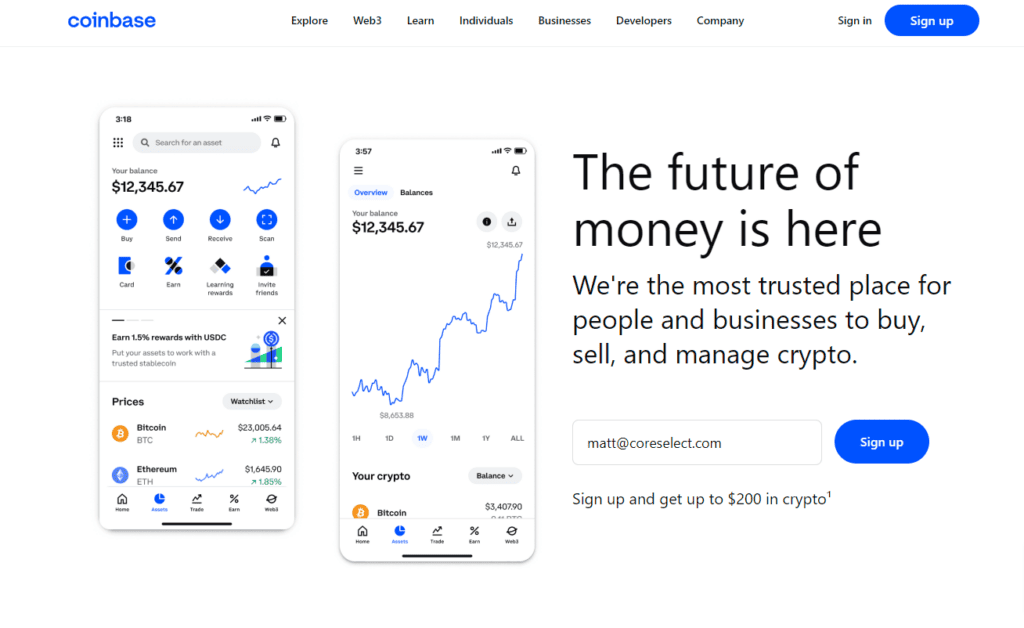
As a one-time skeptic, I can now attest to the incredible potential of cryptocurrency. This digital asset has revolutionized the investment landscape and becomes a new form of “digital real estate”. Here’s why investing in cryptocurrency is worth adding as one of your different types of digital real estate investing assets.
Step 1: Why Cryptocurrency?
Cryptocurrencies, like Bitcoin and Ethereum, offer an exciting investment opportunity due to their potential for high returns. Like a piece of prime real estate, a well-chosen cryptocurrency can significantly increase in value over time. They also allow for greater liquidity, borderless transactions, and the potential to tap into innovative projects through tokens associated with blockchain technologies.
Step 2: Educate Yourself
Before diving into crypto investing, educating yourself about this unique asset class is essential. Understand the basics of blockchain technology, the different types of cryptocurrencies, and how the crypto market works.
Step 3: Choose the Right Platform
Next, you’ll need to choose a cryptocurrency exchange platform. These platforms, like Coinbase, Binance, or Kraken, allow you to buy, sell, and store cryptocurrencies.
Major Crypto Exchanges | Features |
|---|---|
Coinbase | User-friendly, good for beginners |
Binance | Wide range of cryptocurrencies |
Kraken | Advanced features for experienced traders |
Step 4: Start Investing
With a crypto exchange account set up, you can start investing. Begin by buying a small amount of a stable cryptocurrency like Bitcoin or Ethereum. As you gain confidence, you can consider diversifying your portfolio with other coins or tokens.
👉Pro Tip: Be prepared for volatility. The crypto market is known for its price swings. Only invest what you can afford to lose, and always do your research before making investment decisions.
Investing in cryptocurrency can be an exciting and lucrative venture if navigated wisely. Like any form of digital real estate, it requires knowledge, strategy, and risk tolerance. But with these in place, you can ride the crypto wave toward your investment goals. Ready to step into the world of crypto? Your journey begins now!
What Are the Best Types of Digital Real Estate Investing?
To be honest, this simply depends on your interests and skill set. If you’re good at design and understand SEO, starting a blog or flipping websites could make you a fortune. However, this may be your place if you are more analytical and don’t mind scoring the internet for great domain names. In the end, many types of digital real estate investing are available to you, and the best is yet ahead. My advice is not to sleep on this digital frontier any longer! Don’t wait; just get started.

